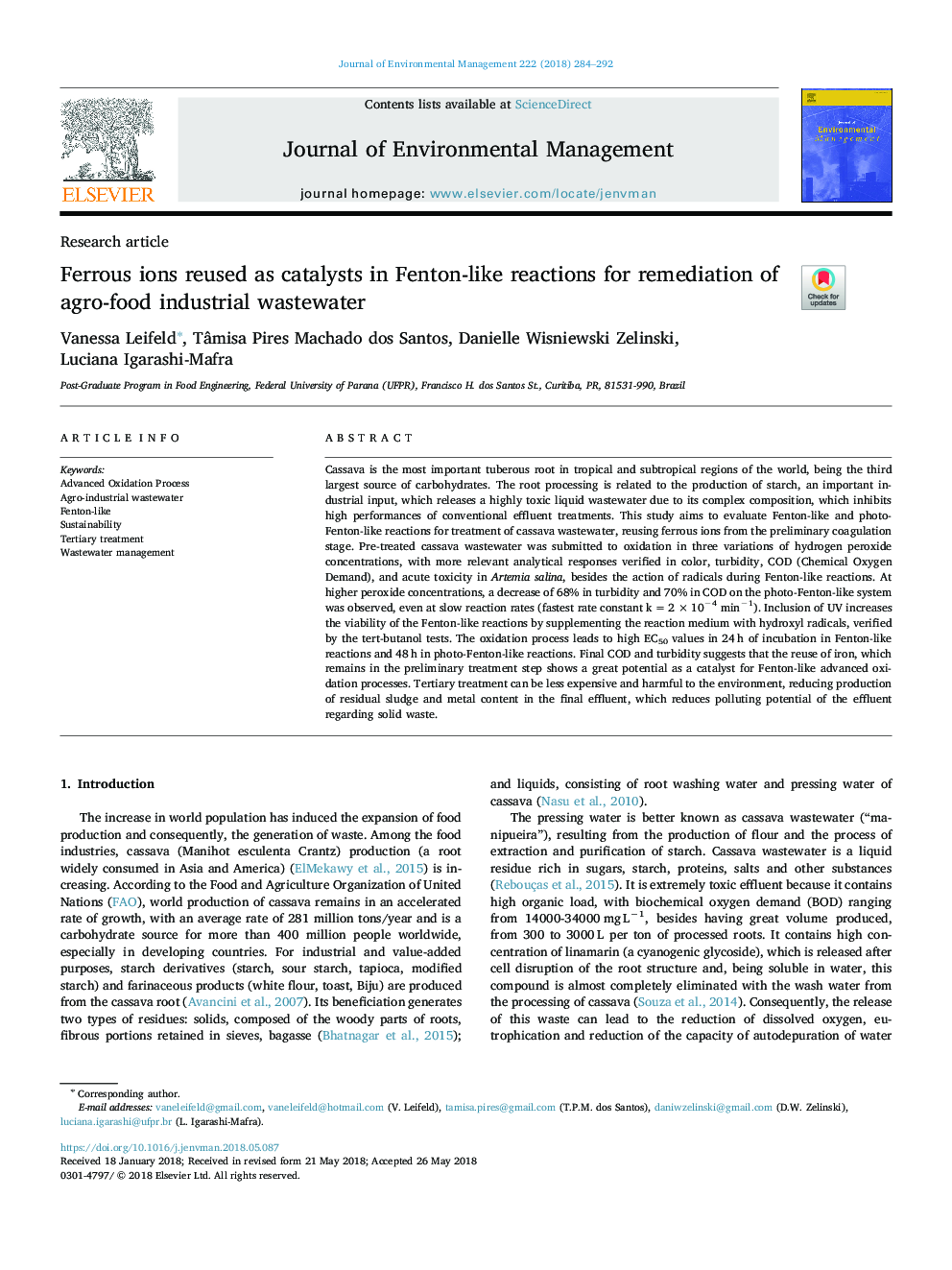| Article ID | Journal | Published Year | Pages | File Type |
|---|---|---|---|---|
| 7476193 | Journal of Environmental Management | 2018 | 9 Pages |
Abstract
Cassava is the most important tuberous root in tropical and subtropical regions of the world, being the third largest source of carbohydrates. The root processing is related to the production of starch, an important industrial input, which releases a highly toxic liquid wastewater due to its complex composition, which inhibits high performances of conventional effluent treatments. This study aims to evaluate Fenton-like and photo-Fenton-like reactions for treatment of cassava wastewater, reusing ferrous ions from the preliminary coagulation stage. Pre-treated cassava wastewater was submitted to oxidation in three variations of hydrogen peroxide concentrations, with more relevant analytical responses verified in color, turbidity, COD (Chemical Oxygen Demand), and acute toxicity in Artemia salina, besides the action of radicals during Fenton-like reactions. At higher peroxide concentrations, a decrease of 68% in turbidity and 70% in COD on the photo-Fenton-like system was observed, even at slow reaction rates (fastest rate constant kâ¯=â¯2â¯Ãâ¯10â4 minâ1). Inclusion of UV increases the viability of the Fenton-like reactions by supplementing the reaction medium with hydroxyl radicals, verified by the tert-butanol tests. The oxidation process leads to high EC50 values in 24â¯h of incubation in Fenton-like reactions and 48â¯h in photo-Fenton-like reactions. Final COD and turbidity suggests that the reuse of iron, which remains in the preliminary treatment step shows a great potential as a catalyst for Fenton-like advanced oxidation processes. Tertiary treatment can be less expensive and harmful to the environment, reducing production of residual sludge and metal content in the final effluent, which reduces polluting potential of the effluent regarding solid waste.
Keywords
Related Topics
Physical Sciences and Engineering
Energy
Renewable Energy, Sustainability and the Environment
Authors
Vanessa Leifeld, Tâmisa Pires Machado dos Santos, Danielle Wisniewski Zelinski, Luciana Igarashi-Mafra,
